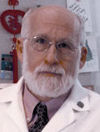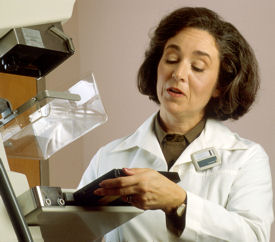Mindful medicine: Perils of diagnosing the physician-patient
A physician diagnoses himself, leaving a colleague to undo some of the mistaken thinking and come up with a simple diagnosis.

Jeffrey Cohn, ACP Member, told us about a case he had seen as a hematology/oncology fellow while at Emory University. The patient was a 44-year-old physician, working in the hepatitis section of the CDC. Four years earlier, he had been successfully treated with cisplatin, vinblastine and bleomycin for a stage-III non-seminomatous germ cell tumor and was seeing Dr. Cohn for routine follow up. The patient had no complaints, but on review of systems, he said that he had developed “Raynaud's phenomenon,” which he attributed to his prior chemotherapy.

The patient had obtained blood tests prior to the appointment and had noted elevated transaminases, as well as cholesterol. “He was a researcher studying hepatitis viruses,” Dr. Cohn said, “and was concerned that he had been exposed in his laboratory, accounting for the elevated transaminases.” When the patient saw the elevated cholesterol result, he had sent his blood to a colleague at the NIH who was studying lipids.
Putting it all together
Dr. Cohn observed that although it was 80° F in Atlanta, the patient was wearing a heavy wool sweater with a turtleneck underneath and below the turtleneck, a T-shirt. Physical examination was remarkable for a sallow complexion and significantly delayed relaxation phases of brachial and plantar reflexes. On inspecting the multichannel chemistry results, in addition to the increases in ALT, AST and cholesterol, Dr. Cohn noted a markedly elevated CPK.
“When I asked him if there was any family history of thyroid disease,” Dr. Cohn told us, “He excitedly replied ‘Yes! My mother has Graves' disease.’” The patient paused and then asked Dr. Cohn, “Do you think I could have a thyroid problem?”
Dr. Cohn pointed out the clinical features indicating hypothyroidism, explained that the “liver function abnormalities” of increased ALT and AST might actually indicate hypothyroid myopathy and that his lipid abnormality was also consistent with this diagnosis.
“For the past six months, my wife has continually asked me, ‘What's wrong with you?’” the patient recounted. He had been unmotivated, fatigued, irritable and forgetful. Dr. Cohn queried him about his “Raynaud's phenomenon.” He did not have classic color changes of his digits but merely had cold intolerance.
Further testing by Dr. Cohn confirmed the diagnosis of hypothyroidism. “His TSH was higher than the upper limits of the lab,” Dr. Cohn said, “and his T4 was undetectable.” Dr. Cohn told us, “The research physician, being investigated by himself and other research colleagues, had the diagnosis of hypothyroidism made by a first-year fellow, fresh out of residency.”
Commentary: perils of self-diagnosis
When the patient is a physician, there is a particular risk of both self-diagnosis and misdiagnosis. In this case, several cognitive errors are evident. The self-diagnosis of Raynaud's phenomenon represents availability bias. The physician-patient attributed this symptom to the dramatic experience of prior chemotherapy which was most available and prominent in his mind.
He further attributed the elevated ALT and AST to occupational exposure to hepatitis virus. This was also an availability error, reflecting understandable anxiety that prevented the researcher from thinking about other causes of elevated transaminases.
The markedly increased CPK was ignored, an example of confirmation bias, whereby a person disregards data that does not fit with his presumption, in this case exposure to hepatitis virus.
The increased cholesterol prompted the physician-patient to send his blood to a lipid specialist, an example of fragmented thinking. Ockham's razor, with its imperative to first look for a unifying diagnosis, was not followed.
The patient also ignored his wife's observations, subtle symptoms but clearly important. As a researcher, he perhaps did not give much weight to these subjective changes in personality and affect, rather focusing on what was quantifiable. Furthermore, hypothyroidism may have affected his mental acuity.
It can be particularly challenging for a treating physician to detour from the diagnostic path provided by a physician-patient. In our own experience, physician-patients can be very persuasive, speaking with authority, and it can be difficult to step back and evaluate the whole picture from a different perspective.
Self-diagnosis common
Self-diagnosis has become frequent in non-physician patients as well, due to the flood of clinical information on the Internet, medical television dramas, news media and direct-to-consumer drug advertising. All these sources of information have a profound impact on the thinking of laypeople, leading them to fixate on a diagnosis prior to evaluation by a physician. With the time pressure of today's clinical practice, it becomes easy to be swayed by a patient who apparently has analyzed his or her own symptoms, and in some cases laboratory tests, and independently arrived at a diagnosis.
In the case recounted by Dr. Cohn, the physician-patient immediately realized that he had missed the diagnosis. “He leaped on the diagnosis,” Dr. Cohn said, “and called his wife to let her know that she was not imagining the changes in his personality.”
Of course, some patients may not so readily relinquish their self-diagnosis and this can be a challenge for the physician. While it is prudent to pay attention to one's health and symptoms, it is important to remember the caveat of William Osler, “The physician who treats himself has a fool for a patient.”



